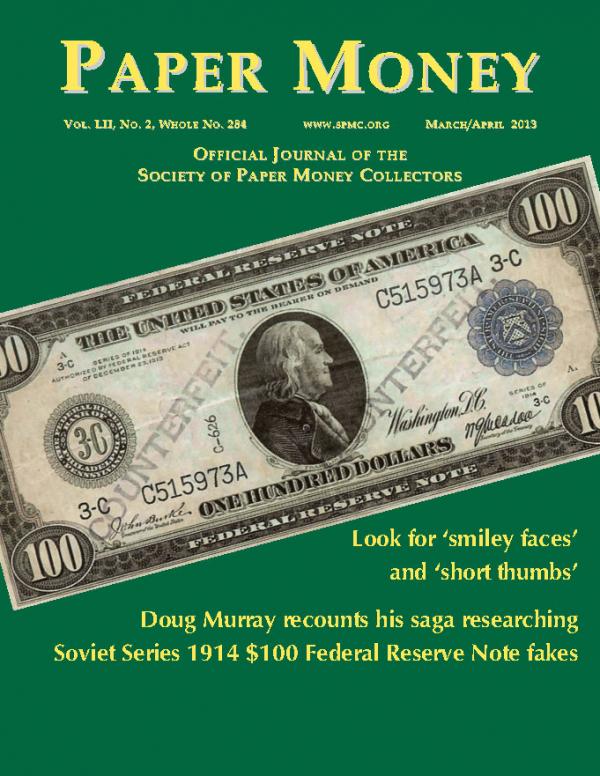Please sign up as a member or login to view and search this journal.

Table of Contents
A Russian Counterfeit Intrigue: My Unexpected 10-year project . 83
By Doug Murray
The Paper Column: Evolution of Skies & Details on State Seals . . .102
By Peter Huntoon
Mary R. Moody, National Bank President . . . . . . . . . . . . . . . 115
By Karl Sanford Kabelac
1847 Note Survey of Type-64 CSA $500 Notes . . . . . . . . . . 116
By Steve Feller
CSA Type-41 Plate Varieties . . . . . . . . . . . . . . . . . . . . . . . . . 120
By James W. Astwood
Small Notes: ‘The’ dropped from Federal Reserve Bank Seals 133
By Jamie Yakes
The Buck Starts Here: Recalling Five Anniversaries . . . . . . . 134
By Gene Hessler
The Paper Column: So How Good Is This Note? . . . . . . . . . . . . . . .140
By Peter Huntoon
Addie P. Duncan (later Monroe), National Bank President . . 146
By Karl Sanford Kabelac
You Can Expand Your Paper Money Horizons . . . . . . . . . . . 153
By Brandon Ortega
First Person Story: ‘My Turning Point’ . . . . . . . . . . . . . . . . . 156
By Jeff Sullivan
SOCIETY & HOBBY NEWS
Information and Officers . . . . . . . . . . . . . . . . . . . . . . . . . . . . . . . . . . . . . . . . .82
Your Subscription to Paper Money Has Expired If . . . . . . . . . . . . . . . . . . . . 86
Last Call: SPMC needs a few good men or women . . . . . . . . . . . . . . . . . . .101
Abraham Lincoln, Beyond the American Icon review by John & Nancy Wilson .125
Collector Hilton shares Montgomery Insights review by Fred Reed . . . . . . .129
President’s Column by Mark Anderson . . . . . . . . . . . . . . . . . . . . . . . . . . . . .132
Uncoupled: Paper Money’s Odd Couple by Joseph E. Boling & Fred Schwan . .126
Last Call: 11th Annual George W. Wait Award Announcement . . . . . . . . . .155
Back of the Back Page with Loren Gatch and Fred Reed . . . . . . . . . . . . . .157
The Back Page with Paul Herbert and John Davenport . . . . . . . . . . . . . . . .158


